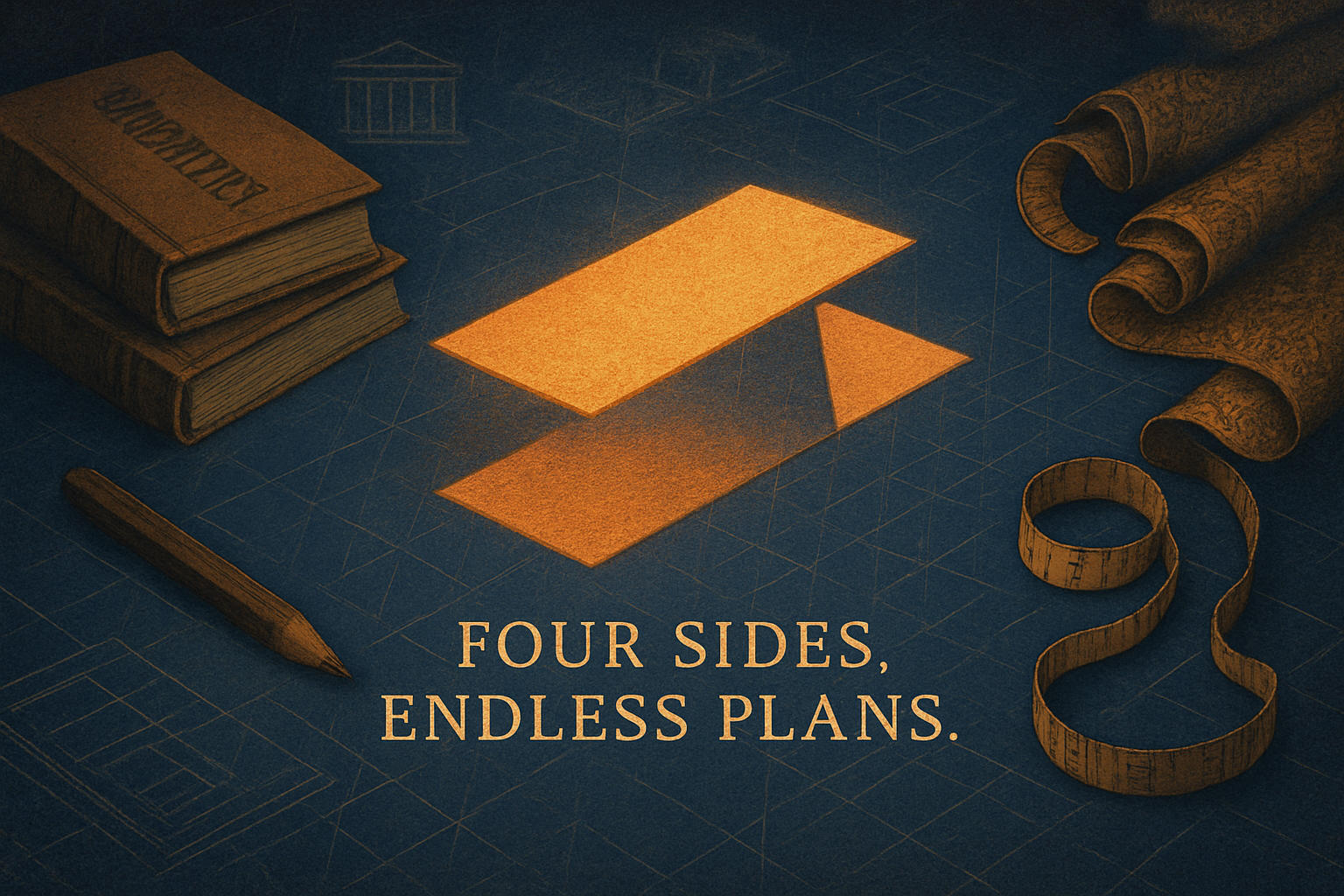When it comes to solving real-world geometry challenges—like estimating flooring, cutting fabric, or designing landscapes—knowing how to calculate the area of a parallelogram can be surprisingly valuable. It’s one of those shapes that quietly shows up in both classroom math problems and practical design work. That’s why we created this Parallelogram Area Calculator—to help you get precise results without the guesswork. Need to calculate the area of something else? The Area Calculator covers everything from circles and triangles to more irregular shapes.
What is a Parallelogram Area?
When someone says parallelogram, you might imagine a slanted rectangle—something from your old math notebooks. But this four-sided figure is more than a quirky shape; it’s a fundamental geometric form with deep mathematical roots and practical applications.
A parallelogram is a type of quadrilateral with opposite sides that are both equal in length and parallel. Thanks to this layout, opposite angles are also equal, and its diagonals bisect each other, giving the shape unique symmetrical properties.
So what exactly is the area of a parallelogram? It measures the total space within its borders. Much like calculating the size of a room or plot of land, knowing how to determine this area is helpful in countless real-life situations.
Tip: Want to explore more? Check out our Triangle Area Calculator and Trapezoid Area Calculator for more hands-on geometry tools.

The Parallelogram Area Formula Simplified
Good news: figuring out a parallelogram’s area is easier than you might think. All you need is the base and the height—two key measurements.
Formula:
Area = Base × Height
Example: You’re building a garden bed shaped like a parallelogram. The base measures 8 feet, and the vertical height to the opposite side is 5 feet.
Area = 8 ft × 5 ft = 40ft2
That’s it—you’ve just calculated the space your garden will cover.
Wondering why this formula looks like the one for rectangles? If you slice off a triangle from one end of a parallelogram and shift it to the other side, it forms a perfect rectangle—a neat math trick with a purpose!
Quick tip: Also try our Square Footage Calculator and Rectangle Area Calculator to tackle similar tasks.
Other Ways to Calculate Parallelogram Area
There are several methods to calculate parallelogram area, depending on the information available. Below is a quick reference guide:
| Method | Formula | Use When You Know |
|---|---|---|
| Base × Height | Area = base × height | Base and perpendicular height |
| Sides and Angle | Area = a × b × sin(θ) | Two side lengths and the angle between them |
| Using Coordinates | Area = ½ × | x₁y₂ + x₂y₃ + ... - y₁x₂ ... |
No matter the approach, our Parallelogram Area Calculator simplifies it—just enter your values and let it crunch the numbers instantly.
Euclid’s Timeless Geometry
More than 2,300 years ago, in ancient Alexandria, Euclid—often dubbed the Father of Geometry—was already analyzing parallelograms. One of his essential discoveries? That parallelograms with the same base and height share equal areas—a principle still taught today.
This insight laid the foundation for much of modern geometry and continues to guide everything from architectural planning to scientific research.
So, next time you calculate the area of a parallelogram, you’re not just solving a math problem—you’re continuing a mathematical tradition dating back thousands of years.
Check out Math section to solve math quickly and easily

